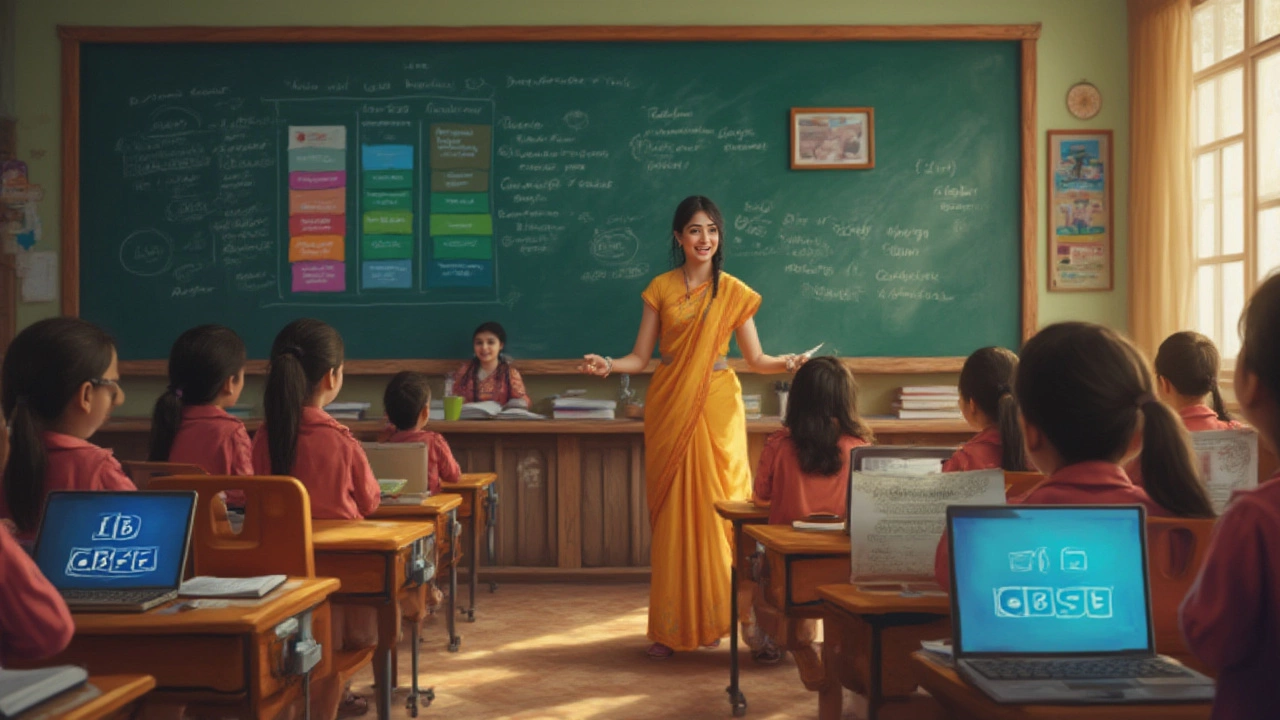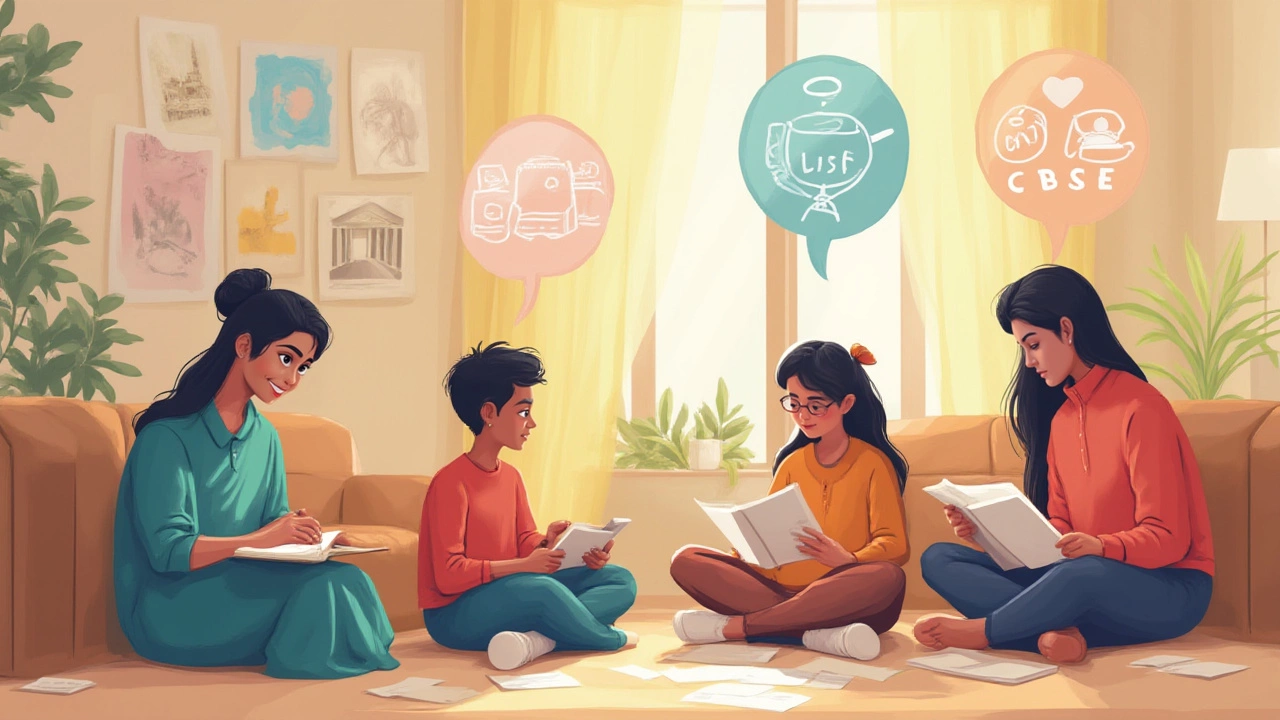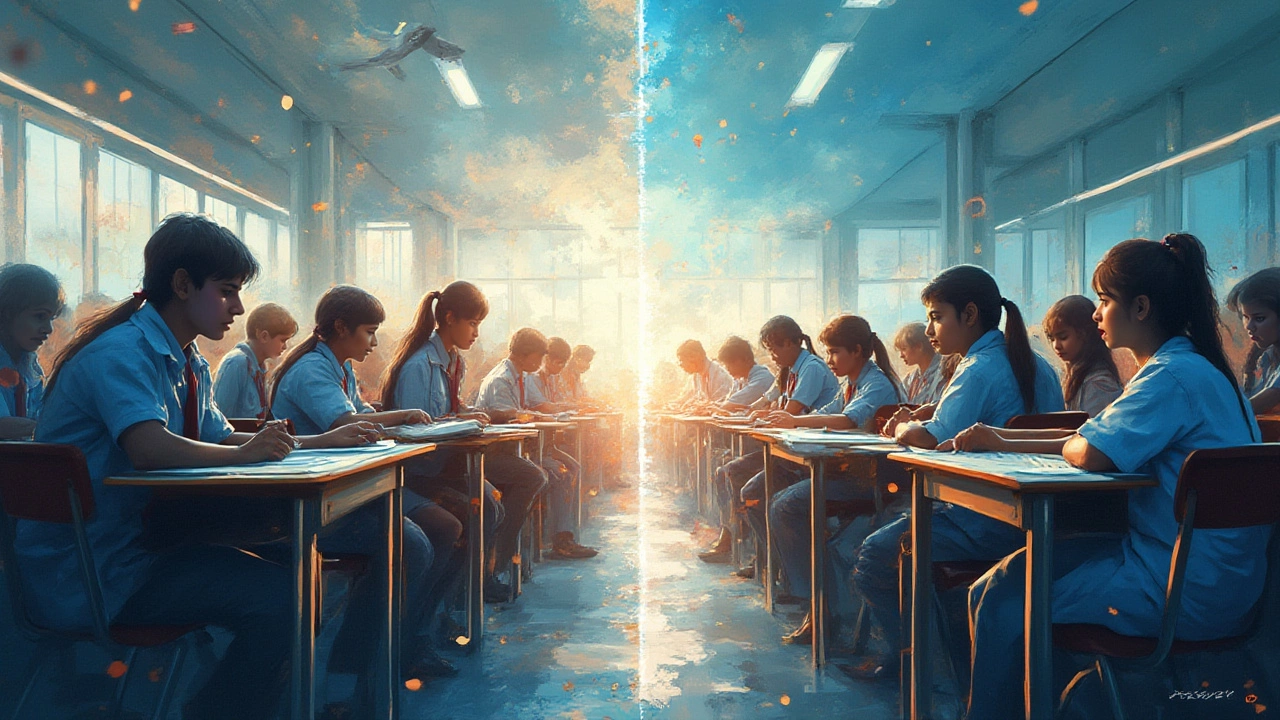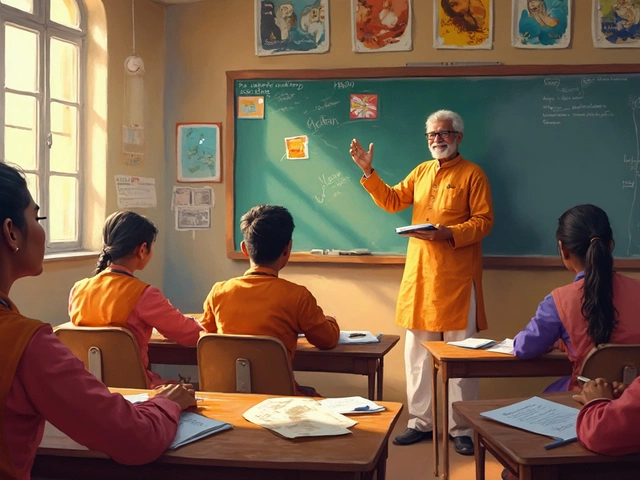
You might think all schools just teach kids the same old subjects, but the world’s top syllabuses set radically different standards for learning. Some push students toward creativity, others focus on discipline and core knowledge. The real surprise? The best syllabus isn’t just about scoring well on tests—it’s about preparing kids for a world changing faster than ever. So, if you’re looking for the single ‘best’ global syllabus, the answer might be trickier than picking the fastest car at a racetrack.
What Makes a Syllabus the 'Best'?
The word ‘best’ is loaded. For some families, the best syllabus means high academic achievement. For others, it’s about critical thinking, or perhaps values and international mindedness. This fight between knowledge and skills, book learning and real-world application, keeps education experts busy at conferences around the globe.
Let’s nail down what actually matters in a syllabus. First: learning outcomes. Mingling memorization and application is crucial. Top schools focus intensely on how much students understand and can use what they’ve learned. Personal growth, adaptability, and soft skills are also getting more attention these days.
Global recognition matters too. International syllabi—like the International Baccalaureate (IB) or Cambridge IGCSE—win points for being accepted at universities worldwide. Meanwhile, some national syllabuses are so tailored to their own country’s needs that they could leave kids at a disadvantage if they move abroad.
Another thing: teacher training and classroom resources. A dazzling syllabus on paper is pointless if teachers can’t bring it to life, or classes are stuffed with 50+ students. Regular updates, focus on real-life projects, and fair assessments weigh in too.
- Learning outcomes: Understanding and applying knowledge, not just memorizing.
- International recognition: Prepares for college/job markets around the globe.
- Teacher training: Quality educators make or break a syllabus.
- Flexibility: Ability to update content, add modern topics, and adapt to student needs.
- Assessment: Not just exams, but projects, presentations, and problem-solving tasks.
Ever wonder which syllabus churns out the highest number of successful leaders? Or which one best prepares students for AI, coding, and new tech? A well-known 2023 study from McKinsey compared students’ critical thinking, creativity, and problem-solving skills across major syllabuses. IB and Cambridge students topped the creativity and global perspective charts, while students from Singapore and Finland scored high in math, reading, and scientific literacy. Yet, the data also showed that no single syllabus was “perfect”—every system had strengths and blind spots.
As Harvard Professor Fernando Reimers puts it:
"The best curriculum is one that is constantly adapting to help students thrive in a world we can barely predict."

How the World’s Biggest Syllabuses Measure Up
Let’s get real and look at specifics. Some syllabuses are almost household names: IB, Cambridge, American Common Core, India’s CBSE, UK’s National Curriculum, Singapore Math, and the Finnish model. Each tells a story about what that region values—be it innovation, tradition, or something else entirely.
The International Baccalaureate (IB) is loved for shaping global citizens. It makes students tackle tough topics in a well-rounded way and puts a huge emphasis on critical thinking, research projects, and foreign languages. But with heavy workloads and costly fees, it can stress out students and parents alike. The depth of its Theory of Knowledge course is often compared to introductory college courses, and its focus on essays can be daunting. Still, its global recognition is tough to beat for students wanting to study abroad.
Cambridge International (IGCSE/A Levels) is all about student choice and flexibility. It lets kids specialize early in subjects they enjoy, and the exams test deep understanding, not just memory. Kids tackle a lot of coursework and must juggle deadlines. Cambridge finds a sweet spot between UK traditions and international flavor, landing students in top global universities.
CBSE, India’s main national board, is known for being structured and exam-driven. It shines in math and science, and an enormous number of engineering and medical students come from here. The focus is very much on factual knowledge—great for test scores, a little weak on creative thinking.
The US Common Core sets clear benchmarks but gives schools a lot of room to design assignments. This makes it flexible but sometimes vulnerable to inconsistencies and wide achievement gaps. There’s a strong push toward “21st-century skills,” yet real-world application depends heavily on the state and district.
Singapore’s education system keeps winning praise for mastering math and science—but the secret is its intense teacher support and constant curriculum tweaks. Students here do a lot of hands-on learning, and lessons are short, sharp, and never drag. Standards are rising across Asia, with Singapore regularly topping OECD’s PISA rankings.
Finland stands out for its minimal homework, no standardized tests until teens, and big investment in teacher training. Finnish kids grow up learning in a relaxed, question-friendly way, with a heavy focus on equality and life skills. There’s no private tutoring mania like you see in parts of East Asia. Their teachers usually need master’s degrees, and teaching is a prized job.
| Syllabus | Strengths | Weaknesses | Global Recognition |
|---|---|---|---|
| IB | Critical thinking, global skills | Heavy workload, expensive | Very high |
| Cambridge | Flexibility, depth | Specialization can be early | Very high |
| CBSE | STEM focus, structure | Less creativity | Good in India |
| Common Core | Flexibility | Inconsistent quality | USA, variable abroad |
| Singapore | Teacher quality, STEM | High pressure | High in Asia |
| Finland | Well-being, equality | Small scale | Model for reforms |
This isn’t just trivia—these strengths and weaknesses matter if you’re picking a school, or wondering why some countries produce more inventors vs. more bureaucrats. It’s not uncommon for families to move countries just to enroll kids in a particular system. The most-asked question on expat forums? Whether to go IB, British, American, or local. The numbers are telling: over 1.95 million students study IB worldwide, Cambridge has nearly a million annual candidates, and CBSE claims 1.5 million students take its Grade 12 board each year. That's more kids than many countries have people.
Want your kid to thrive at Harvard? IB and Cambridge almost guarantee a smoother transition. Dreaming of the Indian Institutes of Technology or AIIMS? CBSE still reigns supreme among entrance exam toppers. Planning to start a company in Finland or join a robotics startup in Singapore? Those countries’ local syllabuses win on real-world readiness and soft skills. You won’t see lots of rote learning or all-night cramming.

What’s the Future: Building the 'Best' Global Syllabus
Could we create a single syllabus that brings out the best from all these systems? It’s a tempting thought—and in fact, many education groups are trying. In 2024, UNESCO launched an experiment where select schools blended IB-style critical thinking workshops, Singaporean math drills, and Finland’s playful curiosity-driven methods. After one year, students scored above average on creativity tests and were less stressed. But the main lesson? Teacher training, school funding, and cultural values often matter more than the syllabus itself.
In our hyper-connected world, what students need most isn’t always what’s taught. Coding barely existed in most core syllabuses a decade ago—now it’s a must-have. Climate change, mental health, financial literacy, digital citizenship: these are popping up fast in revised curricula worldwide. Countries racing ahead don’t just add a new subject—they rethink how all teaching ties into real life.
Parents itching to pick “the best” syllabus should ask some clear questions:
- Is the curriculum updated regularly or set in stone?
- Does it encourage debate and creative thinking, or just memorization?
- Is there space for sports, arts, and emotional growth?
- How are teachers supported to keep up with new topics?
- Are assessments fair and focused on deeper understanding?
Some schools now let students mix and match: IB for high school, Cambridge maths, plus special credits in personal entrepreneurship or coding from startups. They’re finding that variety, not uniformity, keeps kids engaged and ready for anything. We know the world’s top companies say they’re searching for “problem-solvers” and “innovators”—not just human calculators or fact factories.
There’s a subplot here: pressures on students. In China and Korea, test prep “cram” culture is legendary, sometimes leading to burnout and record rates of depression among teens. By contrast, Finland’s soft approach turns out less anxiety and more steady performers. Singapore walks a tightrope with high standards and ambitious reforms to reduce stress, adding mindfulness lessons and banning high-stakes grading before age 12.
Educational data geeks might enjoy this: a recent World Economic Forum analysis showed that students exposed to multiple teaching styles (inquiry, projects, and lectures mixed together) had up to 18% better problem-solving skills at university. This reinforces what top recruiters also say: adaptability, collaboration, and curiosity can be taught, but not in boring, rigid systems.
There’s a quote in IB handbooks that sums it up:
"Education is not about filling a bucket, but lighting a fire."No syllabus, even the best, can do that alone. But a great one can make it a lot more likely.
So, which syllabus is the *best*? That depends where you’re headed, which skills you want for the future, and how you define success. The smart move: look for a system that teaches both enough facts and the courage to ask tough questions. Whether that’s IB, Cambridge, CBSE, Finland, or a custom mix, the real trick is to keep the spark of curiosity alive—because that’s what the world really rewards.





